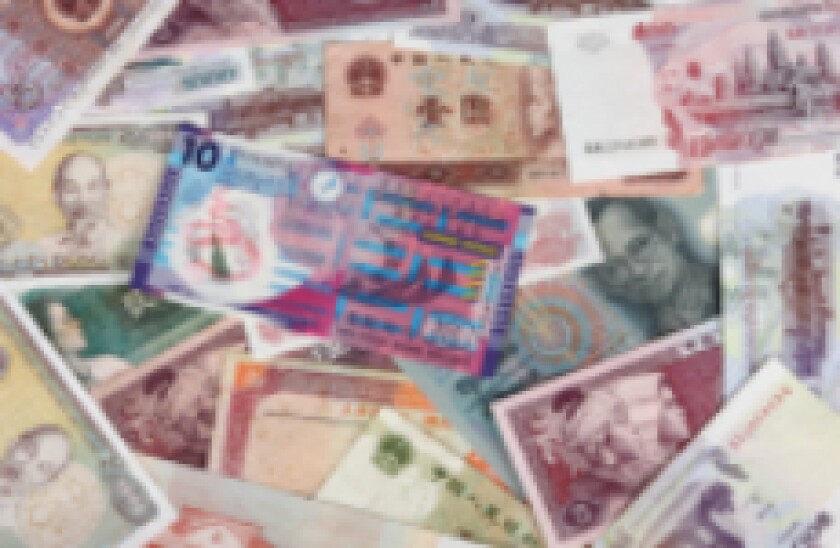Cash management is changing at an extraordinary pace. A slice of the corporate world once largely invisible to outsiders — and even overlooked by many C-suite executives — is now more important, powerful and influential than ever before. Across the Western world, treasurers still carry out the vital task of husbanding a firm’s cash resources. But they also guide corporate thinking on issues ranging from tax policies and data privacy, to outsourcing and the changing face of regulations.
That same story is now playing out across Asia and, more precisely, within the fast-growing Asean region, where a bywater of the corporate and financial world is being transformed beyond all recognition. Western treasurers now assess threats and opportunities stemming everything from market and funding risks, to liquidity and counterparty risks.
“That mindset,” says Amol Gupte, region head of treasury and trade solutions at Citi Asia Pacific, “is now spreading across the region, largely driven by multinationals who have based their regional operations in an Asean country, or who have placed shared service centers in Asean countries.”
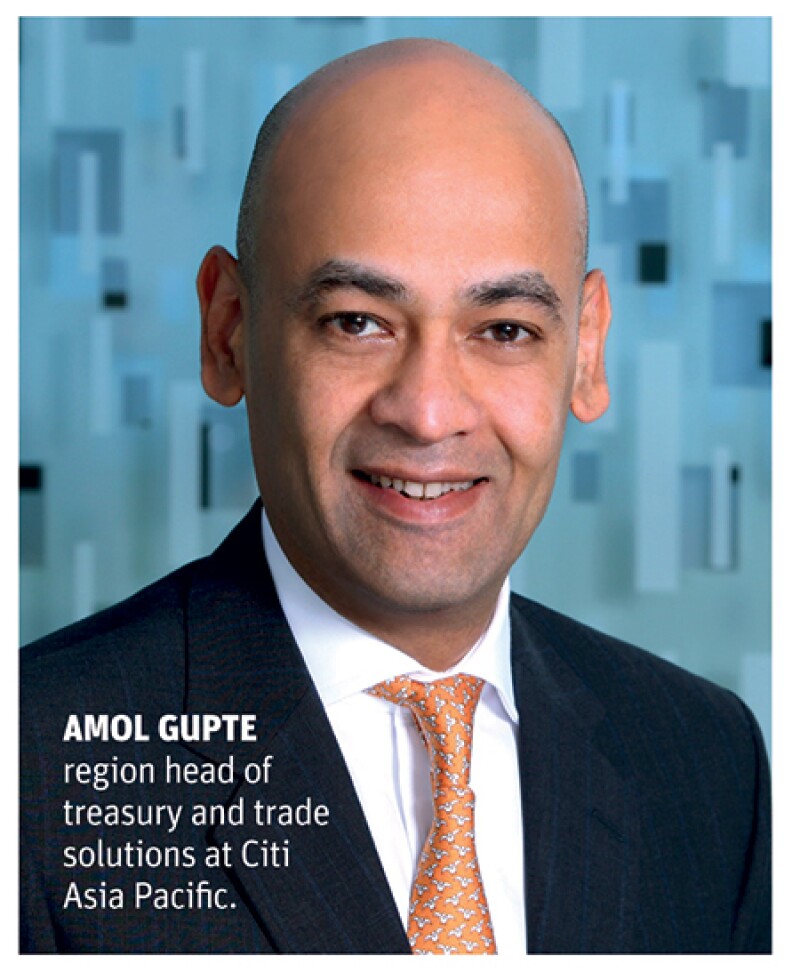
As multinationals push harder into Southeast Asia, attracted by rising growth and internal consumption (the OECD tips Malaysia’s economy to grow by 4.8% in 2015 and 5.1% in 2016, with Indonesia’s expanding by 5.3% and 5.9%, and the Philippines by 6.3% and 6.2%), the pressure rises on global and regional lenders to offer the highest possible level of cash management service.
That in turn is creating a race to the top, as countries and city-states vie to become regional cash management hubs, attracted by the allure of securing a larger share of this super-stable growth industry.
This transformation is playing out both within corporates and the banks that help them manage their cash reserves. And like any good revolution, change is taking place everywhere, in every corner of this once-ponderous industry. Take for example the rising demand for real-time information by treasurers. “We are seeing the development of real-time clearing systems, and the growth of non-traditional payment instruments such as mobile payments,” notes Citi’s Gupte.
Or look at how the globalisation of the payments industry, and the increasingly global convergence of capital and trade flows, are transforming ageless aspects of the sector, such as transactional foreign exchange management. “It is clear that regional treasury departments have never been more focused on FX management,” says Faisal Ameen, head of treasury products, Asia Pacific, at Bank of America Merrill Lynch.
To others, one of the more nuanced challenges for treasurers is how to roll out new cash management services without making them overly intricate, and thus unusable. This isn’t easy. Globalisation by its very nature is complex. Lenders reach more companies (and companies reach more customers) across a bewildering array of markets and time zones, often working to a host of different economic norms and financial regulations.
Complicating matters for global firms with regional aspirations, and for Asean corporates heading in the other direction, while boosting their local presence, is the almost dizzying array of rules that gird business activity. For all its manifold problems, Europe is a single, homogenous market. The same is true in the United States, where a product or service can be sold in all 50 states if it’s approved in one.
That isn’t the case in Southeast Asia, where governments often build fortifications around favoured companies and industries, yet grumble about the protectionist tendencies of the nation next door. And where even the most capable treasurer at the largest and most diverse multinational struggles to keep track of and conform to every regional regulatory twitch and tweak.
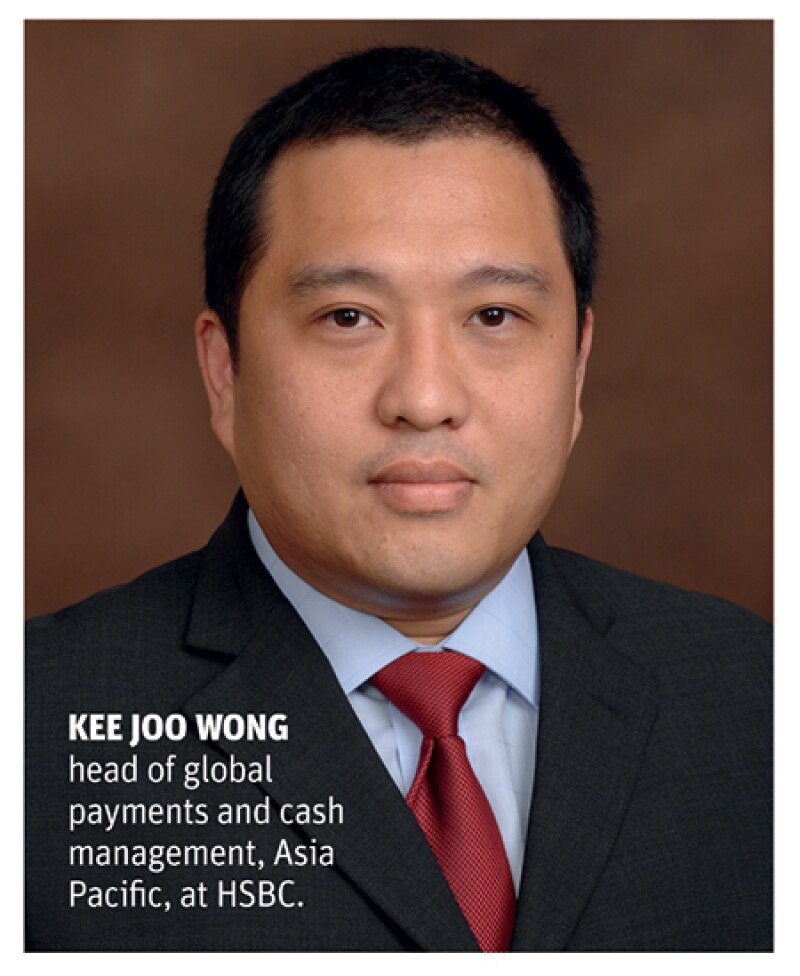
“For company treasurers, the biggest regional challenge is legal and regulatory complexity,” says Kee Joo Wong, head of global payments and cash management, Asia Pacific, at HSBC. “FX regulations, differing legal standards, an absence of uniform payment and collection practices.
"The first things US and European multinationals ask us are: ‘How can I simplify Asia or Asean? And how can I navigate the region’? Multinationals are dealing with multiple currencies in multiple countries and that whole mix of currencies is difficult to govern.”
To this end, innovation, at least in terms of the nature of the service extended to a customer by a financial provider, can often mean making a product easier to understand and use. “Treasurers are paying more attention to having simpler and more efficient solutions than seeking a better rate on deposits,” notes Philippe Jaccard, global head of payments and cash management at ANZ. “They tend to think that more complex solutions present uncertainty — accounting, tax, operations, regulatory — so simple is better.”
Diversity, complexity
That the Asean region, as well as the broader Asia region, is a regulatory minefield for industry practitioners, is beyond dispute. Multiple markets, diverse regulations, a few partially closed capital accounts, and a welter of currencies, most now floating but a few still pegged to the US dollar, all present a constant headache for treasurers.
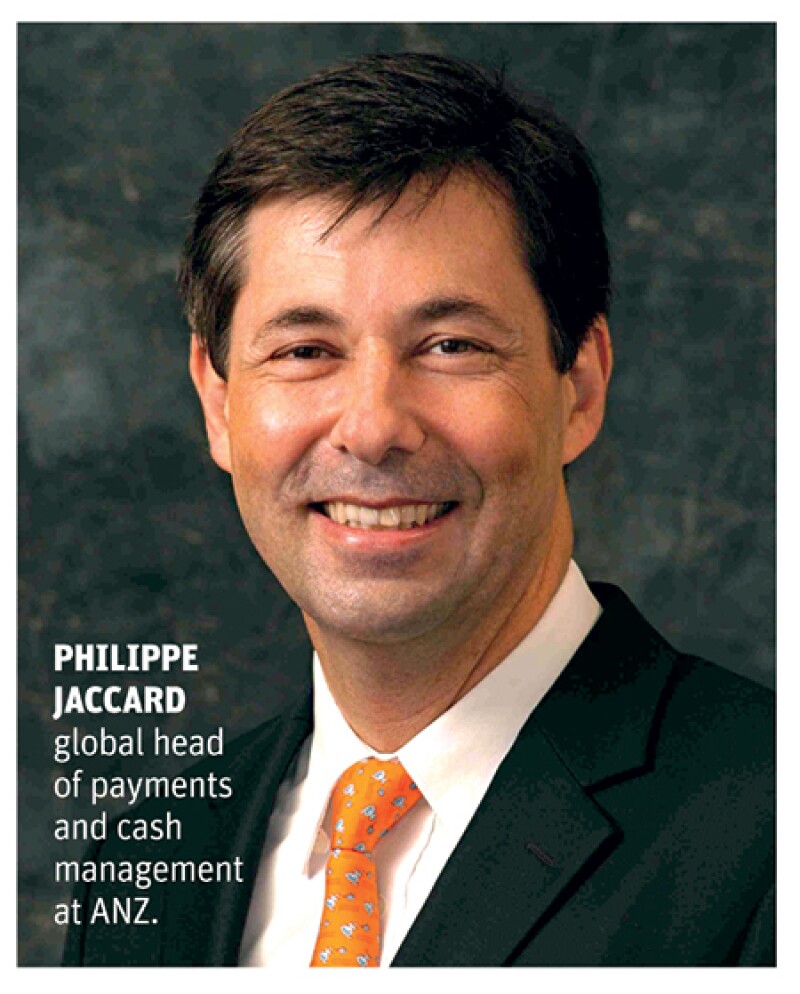
“Corporates are faced with complexities including market-specific requirements for setting up entities, unique central bank reporting frameworks, and questions around how best to mobilise cash,” notes BAML’s Ameen.
One way to tackle this problem is to consolidate a firm’s regional cash management operations in a single, legal-, business- and tax-friendly jurisdiction. For global corporates, this would seem to be necessary and entirely logical. “Centralisation remains a top priority for corporates…and we continue to see global multinationals moving their treasury centres to Asia, in particular Singapore, Shanghai and Hong Kong,” notes Citi’s Gupte.
This process should be given a boost by the Asean Economic Community (AEC), set for launch (having been delayed by 12 months) on the last day of 2015. To many, the multinational body is long overdue. Its charter is simple and worthy, and focuses on the pressing need to form a single competitive market, fully integrated into the global economy.
When complete, notes Citi’s Gupte, “it will generate benefits for businesses in Southeast Asia, transforming the economic and commercial landscapes of member nations. Companies will be able to move goods, capital and people more freely in the region, and have greater access to capital.”
Harmonising rules and regulations, and abolishing tariff and non-tariff barriers for AEC members, should boost growth and trade flows, raise productivity and efficiency, and reduce vulnerabilities to external shocks.
“The AEC has the potential to be a significant player in the global economy,” says HSBC’s Wong. “If Asean were a nation, it would be the world’s seventh-largest economy. As a group, the AEC will have more people than Europe and a growth rate faster than anywhere in the world except China. This has the potential to turn Southeast Asia into an integrated economic powerhouse that will fuel the next phase of global growth.”
But unifying the region economically, and creating a financial industry that adheres to a codified set of financial rules, are two different and often disconnected ambitions. Centralising treasury operations across the region remains a distant dream. Despite all the unifying potential of the AEC, “across Asean, incongruous and changing regulations across markets means unique solutions are needed for each country,” laments ANZ’s Jaccard.
BAML’s Ameen agrees. “The lack of a unified regional currency regime, and diverse regulatory regimes, present specific challenges to treasurers operating both inside and outside” the region, he says. Clients, in turn, “increasingly demand solutions that address FX risk, enhance payment processes, and provide advisory, as they are looking to improve the cross border payment process.”
Centralisation trend
This lack of regional symmetry — a problem exacerbated by a multi-speed and staggered pace of development — can force even the bulkiest multinational to pursue a multi-faceted approach to regional cash management services. So while corporates proclaim the need to centralise their regional treasury operations, they are prepared quietly to tweak their setup to cater to local rules and norms.
“We are observing a trend amongst more centralised treasury departments to localise some activities on a targeted basis,” advises BAML’s Ameen. Another quandary stems from this lack of joined-up thinking. The Asean region is awash with cities and countries straining to present themselves as cash-management hubs. Shanghai is emerging fast, boosted by the stop-start process of renminbi internationalisation, while both Malaysia and Thailand are desperate to define themselves as vital and central to the industry’s cause.
But in truth, the picture is far simpler. “Singapore,” notes HSBC’s Wong, still “dominates overall in Asia. It leverages the large number of multinationals that house their regional headquarters within its borders, as well as the multitude of financial institutions that use the country as a base from which to service neighbouring markets.”
Add to this the Lion City’s raft of attractive tax schemes, its robust legal frameworks, and its deep and liquid pools of foreign exchange and experienced human resources, and the result is a high-class financial hub that acts as catnip to global and regional treasurers.
In recent times Hong Kong has begun to catch up, flagging up its position as the gateway to China (and as the premier RMB clearing and trading hub), along with a zero-rate withholding tax and the adoption of favourable tax rates for treasury centres. These are no small benefits.
“The renminbi is becoming a major focus for Asia corporations, particularly in Hong Kong,” says HSBC’s Wong. “For Chinese multinationals expanding their overseas operations, and for multinationals with significant deficits outside China, the rationale for integrating RMB with existing global liquidity programmes is immediately self-evident. Its rise as a trade currency continues unabated.”
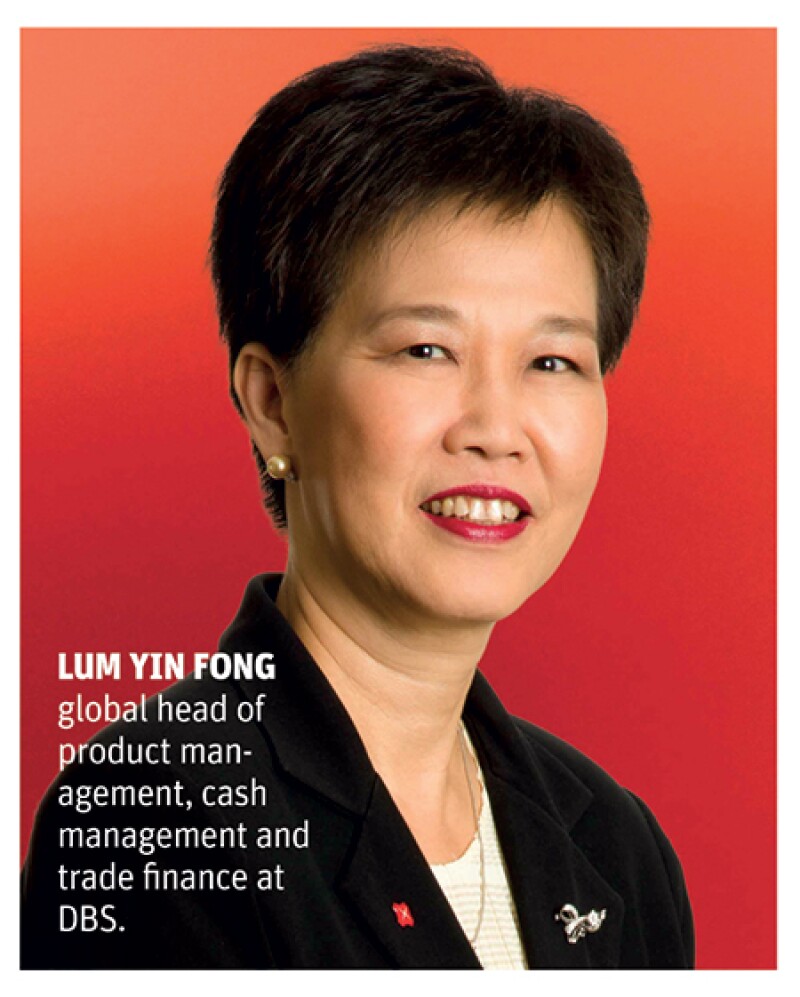
Even here, though, the region’s myriad regulatory tangles undermine efficiency and effectiveness. Despite the imminent launch of the AEC, “regulatory and tax environments in Asean countries continue to be very diverse, limiting the economies of scale and scope for financial centres such as Singapore," says Lum Yin Fong, global head of product management, cash management and trade finance at DBS. "New regulations regarding financial data privacy are bringing additional constraints, limiting data sharing and outsourcing.”
Lum also warns that despite its manifold advantages, Singapore is also becoming a more expensive place in which to do business.
One-stop shop
Making cash management services across the region march to the same regulatory rhythm is vital for everyone. As Asean’s corporate champions expand into new markets, they want to work with financial partners capable of offering a full suite of services, from electronic banking and round-the-clock liquidity, to data visibility and robust risk-management tools.
Global lenders — the likes of HSBC, Citi and BAML — are venerable specialists in this field. But a host of sophisticated Asean and pan-Asian lenders, from DBS and ANZ, to Maybank and CIMB, are also seeking to profit from the global aspirations of regional corporates. To that end, laws that codify Asean cash management practices, placing every lender on the same, level playing field, would be a big help.
Correcting regional regulatory imbalances will not only benefit a region increasingly dependent less on exports than internal consumption, but will also boost financial stability — which is, notes HSBC’s Wong, a prerequisite for stronger economic activity. “A robust payment infrastructure plays a critical role in providing that stability, and removing the current cost and logistical barriers to international payments would be a major step towards unlocking Asean’s full internal growth potential,” he says.
The region still lacks a robust payment infrastructure for settling transactions — a move that would help under-pressure corporate treasury departments to efficiently manage their liquidity in order to support growth objectives.
But progress is being made. “Discussions about the adoption of common payment messaging standards are taking place, and various countries are implementing or upgrading their payment systems,” adds Wong. “Over the next 12 months, we can expect regional treasury centers, for example in Hong Kong or Singapore, to get even stronger. And we can also expect multinationals to continue to assess the business case for the centralisation of [their] treasury processes across the region.”
Again, that latter point is vital for the long-term aspirations of global corporates, desperate for greater regional visibility and control over their cash. Treasurers are under rising pressure to make the best possible use of cash reserves in each jurisdiction. This often leads to cash sweeping, where firms transfer money from foreign divisions to their headquarters, reducing the need to borrow in order to manage cashflow.
“This is certainly happening in Asia, and it is accelerating at a fast pace,” says Citi’s Gupte. “The root cause driving this is the unending search for efficiency in this hyper-competitive environment. This, coupled with increasing deregulation and competition among countries to attract foreign clients, is supporting this trend. We have helped release billions of dollars of liquidity to support regional or global concentrations of our clients.”
Treasurers are also tapping new forms of technology as they look for ways to boost the efficiency of transaction processing and information handling. Corporates across Asean increasingly demand real-time access to transaction and account details, including liquidity positions across multiple devices. Firms looking to minimise borrowing costs and optimise working capital, are also demanding sophisticated data analytics that support cashflow forecasting.
“On the internal front, banks are starting to adopt agile delivery methodologies to enhance core banking applications to operate in more of a service oriented framework,” says Vineet Harnal, head of digital channel delivery at ANZ. “This allows banks to be more nimble in addressing evolving client and market needs.”
In many ways, the future of cash management lies in the ability of financial service providers to harness the power of technology, and for treasurers and their deputies to understand it, and then put it to work.
“Technology continues to be the key enabler in the cash management business,” says HSBC’s Wong. “Growth in cash management is tied to economic growth as well as the development of companies themselves. The larger the company, the more they have to rely on technology to support their business, the more they need cash management.”
It’s yet another sign of how rapidly the cash management industry is changing, not just in Asean and the wider region, but across the world. Once, treasurers were invisible; now, they are both visible and omnipresent, and vital to the success of any multinational company. Across the Asean region and beyond, the role of the corporate treasurer has come of age.

